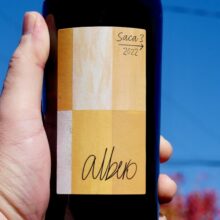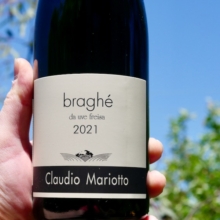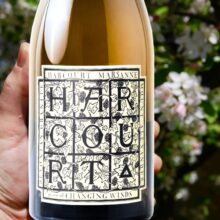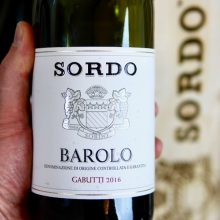
Product information
‘Albero’ Manzanilla en rama saca 3 2022
$72
Description
Albero is the result of a single annual saca (the castellano verb sacar is to take out or withdraw) of unfiltered or en rama Manzanilla, from the solera system of barrels, or soleraje which generates Barbiana Manzanilla. Barbiana is an Andalucian market brand (typically not exported) owned by Delgado Zuleta, and hence the little sister of the renowned La Goya Manzanilla. La Goya has seven clases, or different age levels within its soleraje. Barbiana is a little younger and has four clases (if we were in Jerez, these would be called scales).
Each year, we go to Delgado Zuleta to taste and decide upon a single release to withdraw, bottle and ship as our own selection wine for the following year; sometimes the result will be a mezcla, sometimes it will be a bota seleccionada. Scott and Leah do this tasting together and then collaborate on the label, which is Scott’s hand-writing on Leah’s artwork.
Albero is bottled en rama, virtually un-filtered (it gets a tiny three micron polish). Both the sacar and bottling processes are done in accordance with moon phases, making sure the wine is awake, but not riotously so when being handled.
Very together the richness of en Rama factor explained by SW at play. Building flavour layering depth. Orange Bitters. Oxidative development is exceptional, biological aging. Core of flavour. Full meal wine. Citrus plays cereals. Layered. Rich. Yet a vail of delicacy. Floral and lift sake jasmine. A level of creamy lees. Savour Beautiful flow and flavours and silvery line of bitterness. Generosity and expression. Entrancing. Texture is fascinating.
Paul Kaan, Wine Decoded
Hay, curried straw liquor, lemon bitters, lemon tea cake punched into pumice. A praline touch. Sandy, yes – Albero smells and tastes, sapidity punching into cheek corners. Rolling wheat savoury, bitter tongue point finish and orange blossom rising. Yellowy smells with hints of orange, backfilled with aromatic bitters and a wash of bajamar blues. Salty and oceanic. Waxflower, salted pistachio hearts, and lots of the beach – sand and ozone. Delta-spreading, lean, long and noble. Long, easy, stunning running bitters and vertical tension. Delicious in the mouth, round, vertical, really pleasing. Steely blue base rises ozone to the sky. Bitters punch down into chalk, roll out to a sapid and bitter, sea-spray end, oceanic like having your mouth open while boating.
The front palate rises up with richness, fill and presence, and then subsides with torque to a long, laminated finish with all parts in synch – a collaborative, twining harmony. Almost milky yellow chalk earthen-ness finds brushed steel and estuary waters as the palate unravels and begins to barrel. The sweet chalk, orange-inflected richness become glazed with bitters, releasing ozone, sea-spray and chalk white whispers. The internal X and Y axes of amargo frame and structure all.
Scott Wasley, The Spanish Acquisition
In stock (can be backordered)



